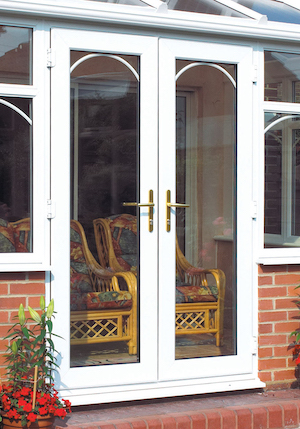
French Door Installation
FollowOverview
-
Founded Date 12 February 2020
-
Sectors HR
-
Posted Jobs 0
-
Viewed 2
Company Description
See What French Door Adjustment Tricks The Celebs Are Utilizing

A Comprehensive Guide to French Door Adjustment: Ensuring Functionality and Aesthetic Appeal
French doors have actually long been a beloved option for property owners looking for beauty and performance for their living spaces. Identified by their big panes of glass and the capability to open fully, French doors can transform a room by inviting natural light and developing a seamless connection in between indoor and outdoor environments. Nevertheless, like any other door, they may require changes with time to maintain their optimal performance. This post will look into the nuances of French door adjustment, exploring why modifications are required, how to perform them, and addressing common questions on the topic.
Comprehending French Door Mechanics
French doors generally consist of 2 panels that swing open from the center. They might have different locking systems, hinges, and frame configurations, which all play a role in their total performance. Here are some common parts involved:
- Hinges: These are critical for swinging the door open and closed, and they must be correctly lined up to ensure smooth motion.
- Locks and Latches: Mismatched locks can cause security issues and impact functionality.
- Limit: The bottom part of the door frame can end up being irregular, triggering gaps and drafts.
Why French Door Adjustment is Necessary
In time, French doors can experience misalignment due to:
- Settling of the House: Homes naturally settle, triggering frame adjustments which can misalign doors.
- Humidity and Temperature Changes: Wood doors can swell or diminish with humidity and temperature changes.
- Use and Tear: Regular use in time can lead to loose hinges or unequal thresholds.
Appropriate adjustment of French doors is vital to preserve not only their visual appeal however also their functionality.
How to Adjust French Doors
Changing French doors includes numerous steps and might vary a little depending on the particular configuration. Nevertheless, the following general procedure uses commonly to most French door setups.
Step-by-Step Adjustment
- Assessment: Begin by checking the hinges, frame, and threshold for noticeable gaps or misalignments.
- Collect Tools: You will need:
- Screwdriver
- Level
- Shims (if needed)
- Allen wrench (if hinges are adjustable)
- Adjust the Hinges:
- Loosen the screws on the hinges somewhat.
- Using an Allen wrench, adjust the hinge screws (if relevant) to raise or reduce the door panel till it aligns correctly.
- Tighten the screws back after adjustment.
- Inspect the Alignment: Use a level along the door’s edge to guarantee it stands directly. Adjust as needed.
- Adjust the Threshold: If spaces continue at the bottom, usage shims under the limit or adjust it according to maker directions.
- Test the Locking Mechanism: Ensure that the doors lock safely into place without forcing them.
- Final Inspection: Check for any draft or misalignment after changes and proper if needed.
Maintenance Tips
- Regularly check hinges and locks for wear and tear.
- Clean hinges with a lubricant to minimize friction.
- Inspect weather removing and replace it if it shows significant indications of wear.
When to Seek Professional Help
While many house owners can address minor changes separately, some scenarios necessitate professional consultation:
- Complex issues related to structural problems within the home.
- Extreme misalignment triggered by extended wear, requiring replacement of hinges.
- Issues with lock mechanisms that require specialized tools and expertise.
Common FAQs About French Door Adjustments
1. How frequently ought to I change my French doors?Adjustments should
be made as needed. A seasonal check is advised to make sure optimal performance, particularly after significant weather changes. 2. What tools do I need for adjustment?Basic tools include
a screwdriver, level, Allen wrench, and shims for
supporting uneven limits. 3. Why is my French door sticking?Sticking might result from humidity triggering the door to swell or from
misaligned hinges. Check for grooves and adjust as necessary. 4. Can I adjust French doors myself?Yes, with standard tools and a little understanding of the components, the majority of property owners can handle easy changes.
5. What if my French doors won’t close properly?This can suggest serious misalignment or damaged hardware. Evaluate the situation and consider professional aid if it can not be solved with simple changes. French doors can considerably boost the visual and functional qualities of a home. Though they might require periodic adjustments due to various factors such as settling, humidity, and routine usage, a few easy steps can
restore their efficiency. Regular evaluations and proactive maintenance can extend the lifespan of French doors, permitting property owners to enjoy their appeal and utility for many years to come. Ultimately, a well-adjusted set of French doors not only serves practical purposes but likewise contributes to the overall beauty of any space. Summary Table: Key Points for French Door Adjustment Element Description Components Hinges, locks, locks, limit Common Issues Misalignment, sticking, spaces Tools Needed Screwdriver, level, Allen wrench, shims Adjustment Steps Check, change
hinges, check alignment Maintenance Tips Routine clean-up,
| examine for wear, change seals | |
|---|---|
| When to Seek | Help Complex issues or structural issues With this |
| knowledge at hand, house owners can ensure their French doors stay not | |
| simply practical, however likewise a lovely function of their living space.
|


